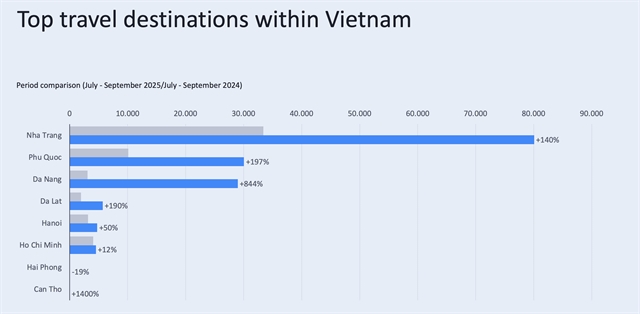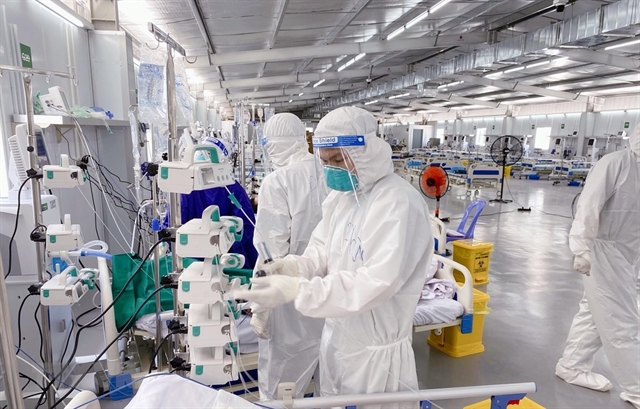 Society
Society

The Ministry of Health on Sunday asked authorities in HCM City and other southern localities to take drastic measures to reduce COVID-19 facilities.

|
| A COVID-19 Intensive Care Hospital managed by Việt-Đức Hospital staff in HCM City. VNA/VNS Photo |
HÀ NỘI — The Ministry of Health on Sunday asked authorities in HCM City and other southern localities to take drastic measures to reduce COVID-19 facilities.
According to the ministry, Việt Nam has reported 13,074 deaths relating to COVID-19 by Sunday evening, accounting for 2.5 per cent of total infections in the country.
Việt Nam’ COVID-19 fatality rate is now 0.4 per cent higher than the world average.
Particularly, until September 5, HCM City has reported 10,320 deaths out of 251,414 infections. Bình Dương Province saw 1,097 deaths out of 132,433 infections, while Long An Province reported 299 deaths out of 25,085 infections.
For weeks, the number of deaths reported daily in HCM City remained high despite a slight drop. On August 30, the city reported 335 deaths. On September 1, the fatality number fell to 217 but then, increased by 250 on September 2 and 222 on September 5.
According to the health ministry, the Government, ministries, agencies and authorities in southern localities have been making efforts to curb COVID-19 fatalities. However, the efforts have generated results more slowly than expected.
To further curb fatalities, the health authority urged HCM City, southern provinces and relevant agencies to further improve COVID-19 treatment.
The localities were asked to review and establish COVID-19 treatment fatalities.
They were suggested to make use of available infrastructure to establish COVID-19 treatment facilities. Existing medical facilities should be turned into COVID-19 treatment areas for patients with medium and severe illness while other sites could be used for patients without symptoms or with mild symptoms.
Commune/ward healthcare centres, mobile healthcare stations and COVID-19 community teams were called on to help managing and supporting COVID-19 patients staying at home.
The ministry also asked localities to improve the management and coordination in transporting patients from their residency to treatment facilities and between COVID-19 treatment facilities.
Localities must prepare sufficient medicine and medical equipment for emergency and intensive care units at COVID-19 treatment facilities.
At the facilities designed for patients with mild symptoms, oxygen bottles must be available to meet the needs of emergency treatment for patients breathing oxygen through a mask or oxygen with eyeglass frames.
At the facilities designed for patients with medium symptoms, high-flow oxygen ventilators, non-invasive ventilators, gas oxygen bottles, liquid oxygen cylinders, compressed air lines, pressure suction lines, and evaporators must be available to meet the needs of emergency and resuscitation for patients who require high-flow oxygen or non-invasive mechanical ventilation.
At the facilities designed for patients with severe symptoms, high-flow oxygen ventilators, invasive/non-invasive ventilators, liquid oxygen tanks, compressed air lines, pressure suction lines, evaporators, liquid oxygen cylinders and gas oxygen bottles must be available to meet the needs of emergency and active resuscitation for critically-ill patients.
Also in the latest notice sent to southern localities, the Ministry of Health asked them to review and arrange medical staff.
The local authorities are asked to provide proper training for available staff to meet the requirements of specific treatment facilities.
In addition, the localities could call on the private health sector and retired medical workers to help in managing and offering care to COVID-19 patients.
Localities will strengthen the connection, consultation and remote treatment consultation between COVID-19 treatment facilities for seriously ill patients.
The COVID-19 treatment facilities and the 115 emergency system will boost information technology applications for better communication. The improved connection will help increase the effectiveness in receiving, transporting and delivering emergencies for patients. — VNS